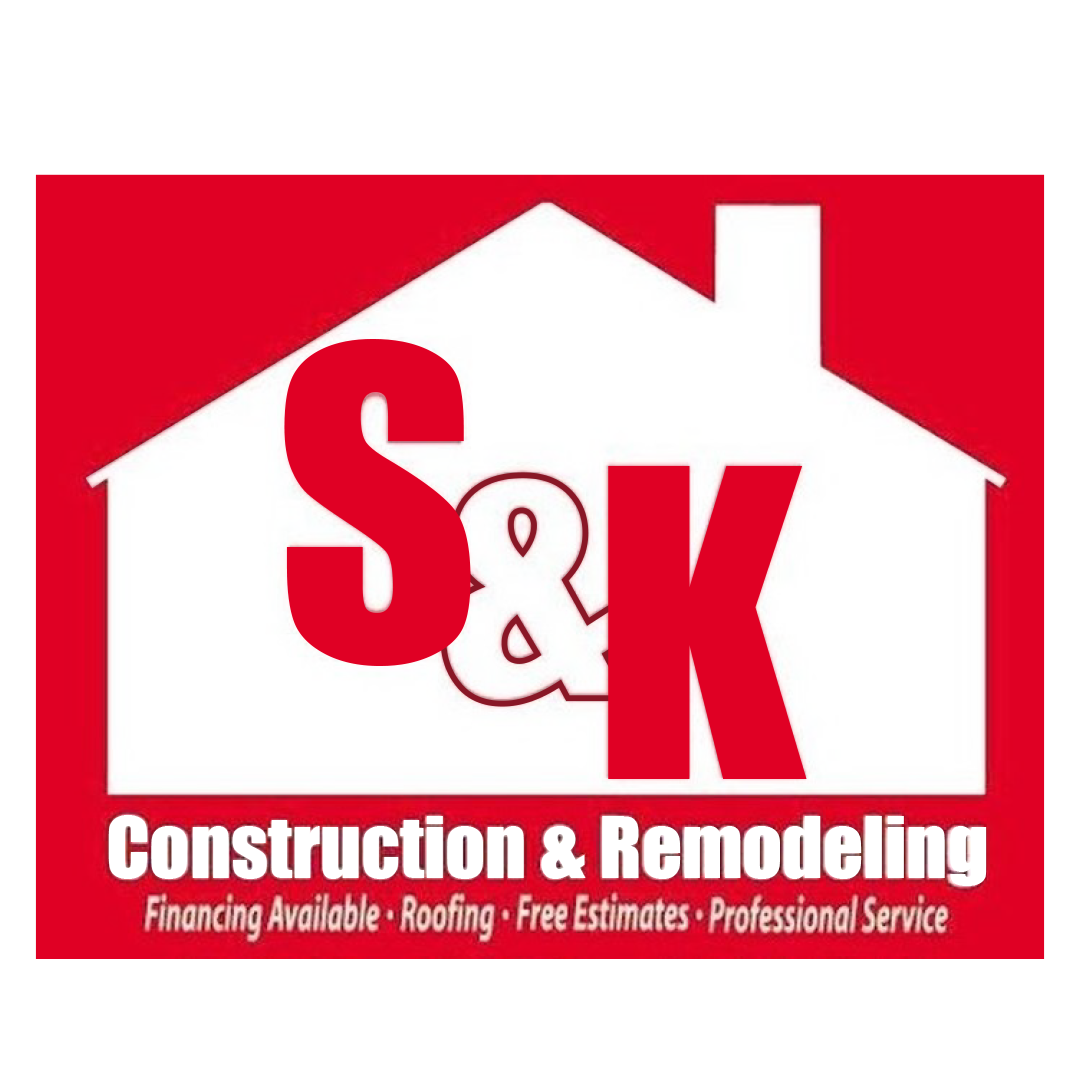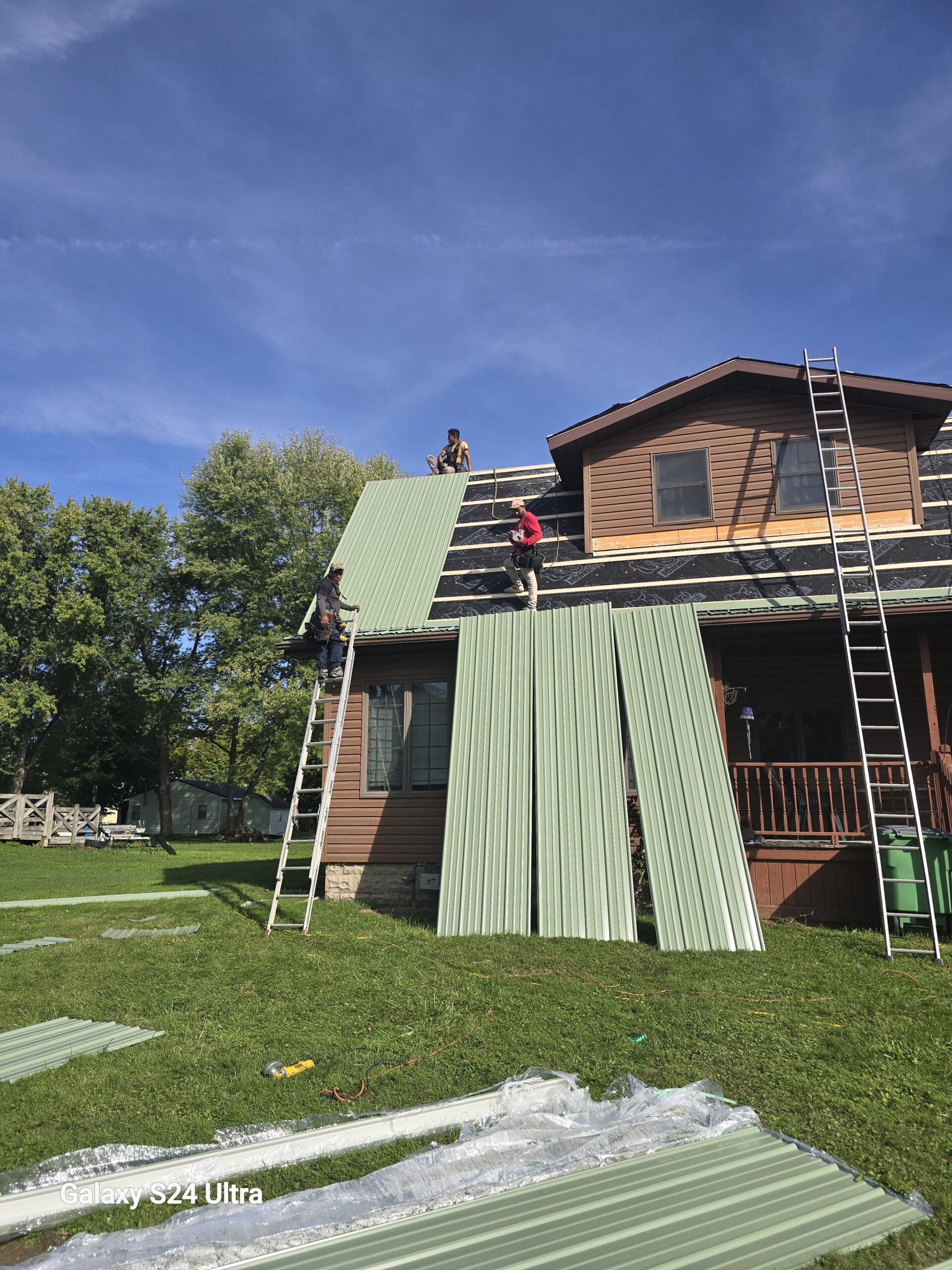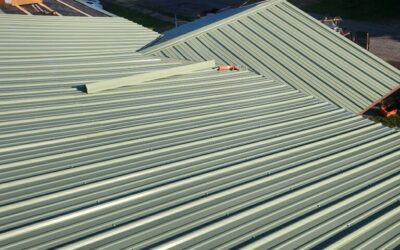How Much Roof Sag Is Acceptable? A Comprehensive Guide for Homeowners
When it comes to maintaining your home, the roof is one of the most crucial aspects of ensuring your family’s safety and comfort. A well-maintained roof not only protects you from the elements but also increases the value of your property. However, roof problems can arise over time, and one common issue that homeowners may encounter is roof sagging.
Roof sag is an issue that often goes unnoticed until it becomes more severe, leaving homeowners wondering how much sag is acceptable before it poses a serious risk. In this blog post, we’ll discuss the causes of roof sag, how to identify it, how much sag is considered acceptable, and what to do if you discover your roof is sagging.
What Is Roof Sagging?
Roof sagging occurs when the roof structure, usually the rafters or trusses, begins to bow or dip downwards. This can lead to visible sag in the roofline or other structural issues. Sagging roofs are typically a sign of underlying problems that can escalate into more serious damage if not addressed.
There are several types of roof sagging:
- Rafter Sag: This occurs when the roof’s rafters or beams bow due to excessive weight, moisture, or wear.
- Truss Sag: Trusses are engineered systems used to support the roof, and if one or more trusses fail or are overloaded, they can sag.
- Deck Sag: The roof deck, which is the base layer of the roof, can sag due to moisture, weight, or structural issues.
Common Causes of Roof Sagging
Several factors can lead to roof sagging, each contributing to the problem in different ways. Understanding the causes of roof sag can help you address the issue early and prevent further damage.
- Excessive Weight One of the most common causes of roof sagging is excess weight. This can come from heavy snow, ice accumulation, or even the weight of roofing materials if your roof is overloaded during a renovation. In some cases, poorly distributed weight can also contribute to sagging.
- Water Damage Water is a major culprit when it comes to sagging roofs. Over time, moisture can cause wooden rafters and trusses to weaken, leading to sagging. This is particularly true if there is a leak in the roof or if the attic is poorly ventilated, causing trapped moisture to damage the roof structure.
- Improper Installation Roofs that were not properly designed or installed are at a higher risk of sagging. This could involve the incorrect installation of rafters or trusses, or using subpar materials that are not strong enough to support the roof. As a result, over time, the roof may begin to sag under the weight it was not designed to bear.
- Age of the Roof As roofs age, they naturally begin to deteriorate. Materials that were once strong and durable, such as wood and metal, can weaken over time due to wear and exposure to the elements. The roof may eventually begin to sag as the materials lose their strength and integrity.
- Structural Issues In some cases, sagging roofs are caused by structural issues with the building itself. For example, foundation settlement, shifting, or poor construction practices can lead to uneven load distribution, resulting in sagging.
- Pest Infestation In rare cases, an infestation of pests, such as termites, can weaken the roof structure, leading to sagging. If you notice signs of pest damage in your roof or attic, it’s important to address the issue immediately to prevent further deterioration.
How Much Roof Sag Is Considered Acceptable?
When it comes to roof sag, there is no simple answer to how much sag is acceptable. The amount of sag that is considered acceptable depends on several factors, including the type of roof, the extent of the sag, and the underlying cause.
Here are a few general guidelines to help you understand whether the sag in your roof is a cause for concern:
- Minor Sag (Less Than 1 Inch) In some cases, minor sag of less than one inch may not be a significant concern. This could be a result of the natural settling of the house or slight imperfections in the roof structure. If the sag is minimal and you don’t notice any other signs of damage (such as leaks or cracks), it may be acceptable to monitor the situation without immediate repairs.
- Moderate Sag (1-3 Inches) If your roof is sagging by more than an inch but less than three inches, it’s important to investigate the underlying cause. Moderate sag could be a sign of stress on the roof, such as excessive weight or water damage. At this point, it’s recommended to consult a roofing professional to assess the situation and determine if repairs or adjustments are needed.
- Severe Sag (More Than 3 Inches) Severe sagging of more than three inches is a major cause for concern. This level of sagging typically indicates a serious structural issue, such as weakened rafters, trusses, or decking. Severe sagging can lead to roof collapse if left unchecked. If you notice sagging of this magnitude, it’s crucial to contact a roofing professional immediately for an inspection and repair.
How to Identify Roof Sagging
Identifying roof sag is not always easy, as it may not always be obvious from the ground. However, there are several signs you can look for to determine whether your roof is sagging:
- Visible Sagging The most obvious sign of a sagging roof is a noticeable dip or bow in the roofline. Look for areas where the roof appears to dip downward or where the roofline is uneven. If you can access the attic or crawl space, you may be able to see the sag more clearly.
- Cracks in the Ceiling If your roof is sagging, you may notice cracks in the ceiling of the rooms directly beneath the affected area. These cracks could indicate that the roof is putting pressure on the ceiling or walls.
- Water Stains or Leaks Water stains on the ceiling or walls can be a sign of water damage, which may be contributing to roof sagging. If you notice a leak or water stains, it’s essential to address the issue quickly to prevent further damage.
- Warped or Drooping Roof Decking If you have access to the attic, inspect the roof decking. Look for any areas that appear warped or drooping, which can indicate that the roof structure is weakened.
- Odd Noises Sometimes, sagging roofs can cause unusual noises, such as creaking or popping, due to the shifting of the roof structure. If you hear strange sounds from the roof or attic, it could be a sign that something is wrong.
What to Do if Your Roof Is Sagging
If you’ve noticed signs of roof sagging, it’s important to take action immediately. Roof sagging is not a problem that should be ignored, as it can lead to more serious damage over time. Here are some steps you can take:
- Call a Roofing Professional The first step in addressing roof sag is to contact a qualified roofing professional. They can perform a thorough inspection of the roof and determine the extent of the sagging. Based on the cause of the sag, the roofer will recommend the best course of action, whether it’s repairs or a full roof replacement.
- Consider Roof Repairs or Reinforcements If the sag is caused by excessive weight or moisture, repairs may be necessary to reinforce the roof structure. This could involve replacing damaged rafters or trusses, adding additional support, or improving attic ventilation.
- Address Water Damage If water damage is contributing to the sag, it’s crucial to identify and fix the source of the leak. Roof leaks can often be repaired by replacing damaged shingles or flashing. However, if the water damage is extensive, the entire roof may need to be replaced.
- Monitor the Situation In some cases, minor sagging may not require immediate repair, but it’s important to monitor the situation. Keep an eye on the roof for any changes, and if the sag increases, contact a professional immediately.
Preventing Roof Sagging
While some factors, like aging and severe weather, are beyond your control, there are steps you can take to prevent roof sagging:
- Regular Roof Inspections Have your roof inspected at least once a year by a professional roofing contractor. Regular inspections can help catch issues early before they turn into major problems.
- Maintain Proper Ventilation Proper attic ventilation helps prevent moisture buildup, which can weaken the roof structure. Ensure that your attic is properly ventilated to reduce the risk of sagging.
- Remove Snow and Ice Heavy snow and ice can put excessive weight on your roof, leading to sagging. If you live in an area with heavy snowfall, it’s important to remove snow and ice from the roof regularly to prevent damage.
- Address Leaks Immediately If you notice a roof leak, address it as soon as possible. Even small leaks can lead to significant damage over time.
Conclusion
Roof sagging is a serious issue that can compromise the safety and integrity of your home. While minor sagging may be acceptable in some cases, it’s important to monitor the situation closely and take action if the sagging worsens. If you notice significant sagging or other signs of roof damage, it’s crucial to contact a professional roofing contractor for an inspection and repair.
Remember, roof sagging can often be prevented with regular maintenance, proper ventilation, and prompt attention to leaks and other issues. By staying proactive and addressing roof problems early, you can ensure that your home remains safe, comfortable, and protected for years to come.
About S&K Construction and Remodeling LLC
S&K Construction and Remodeling LLC is a trusted roofing contractor serving the Cleveland, Ohio, area. With years of experience, we specialize in roof repairs, replacements, and inspections. Our team is committed to providing high-quality craftsmanship and exceptional customer service. If you’ve noticed roof sagging or other issues, don’t hesitate to contact us for a free consultation and thorough inspection.
We proudly serve homeowners throughout Cleveland, Lakewood, Medina, Euclid, Twinsburg, and the surrounding areas. For more information or to schedule an inspection, contact us today!
 (440) 307-2060
(440) 307-2060


